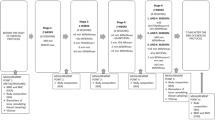Bone mineral density (BMD) is affected by muscle strength. Recently, vitamin D receptor (VDR) genotype was reported to affect muscle strength as well as BMD in Caucasian women. The aim of this study was to evaluate independent effects of muscle strength of the trunk on BMD at the spine and its change over time in Japanese women. We followed 119 healthy postmenopausal women for 4 years and determined the change in BMD at the spine by dual energy X-ray absorptiometry. Isometric peak torque and isokinetic concentric and eccentric peak torque of the trunk flexors and extensors were measured. The VDR genotype was determined by the PCR-RFLP method based on Apa I and Taq I endonuclease digestions defining the absence/existence of the restriction sites as A/a and T/t, respectively. The subjects were 60.1 ± 6.6 years old, had 0.808 ± 0.159 g/cm2 of BMD at baseline. The mean annual change in BMD (DBMD) was ?5.6 ± 10.4 mg/cm2 during the follow-up period. The VDR genotype, defined by Taq I enzyme, significantly related to BMD at baseline and DBMD showing that the subjects with genotype TT had the lowest BMD at baseline and lost bone most rapidly. However, its effect on muscle strength was not significant. All the trunk muscle strength indices showed significant positive effects on DBMD, that is, the effects in increasing the gain and reducing the loss of BMD, after controlling for the effects of age, body size and the VDR genotype. The eccentric trunk extensor torque had a significant positive effect on DBMD in a dose-dependent manner. The effect of this torque was the greatest among all the muscle indices. The net effect of the trunk extensor torque on DBMD was greater than that of the VDR genotype. The trunk muscle strength was suggested to affect BMD change independently of age, body size, and the VDR genotype. Exercise programs to increase the strength of the trunk muscles would be beneficial for the prevention of osteoporosis regardless of the VDR genotypes.
Similar content being viewed by others
Author information
Authors and Affiliations
Rights and permissions
About this article
Cite this article
Iki, M., Saito, Y., Dohi, Y. et al. Greater Trunk Muscle Torque Reduces Postmenopausal Bone Loss at the Spine Independently of Age, Body Size, and Vitamin D Receptor Genotype in Japanese Women . Calcif Tissue Int 71, 300–307 (2002). https://doi.org/10.1007/s00223-001-2109-4
Received:
Accepted:
Issue Date:
DOI: https://doi.org/10.1007/s00223-001-2109-4




